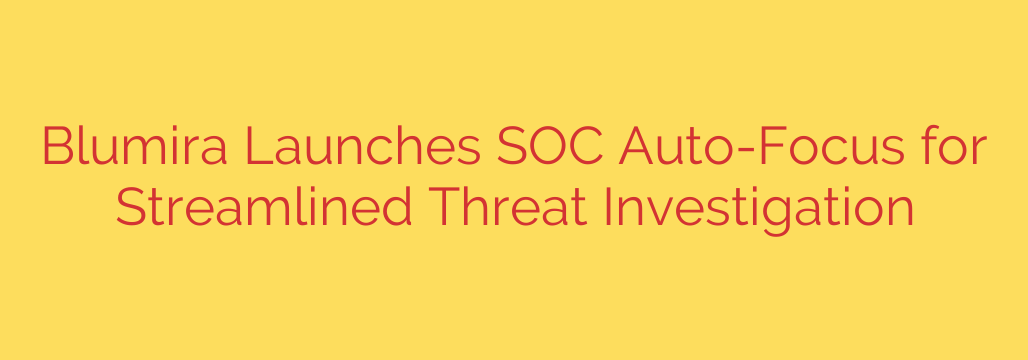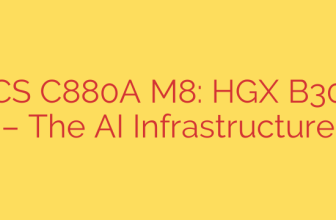
Cut Through the Noise: How Automated Evidence Collection is Revolutionizing Threat Investigation
In the world of cybersecurity, more data isn’t always better. Security teams are often faced with a deluge of alerts from countless tools, including firewalls, endpoint detection systems, and cloud applications. The result is a state of constant noise and alert fatigue, making it incredibly difficult to pinpoint genuine threats. For every critical incident, there are hundreds of false positives, and sifting through them is a manual, time-consuming process.
The traditional approach to threat investigation involves a security analyst noticing a suspicious alert and then manually piecing together the story. This “swivel chair” analysis requires them to jump between different systems, run multiple queries, and painstakingly correlate logs to understand what happened. This process can take hours or even days, leaving a dangerous window of opportunity open for attackers.
The core challenge is a lack of context. An isolated alert provides a single piece of a puzzle, but without the surrounding pieces, it’s nearly impossible to see the full picture. This is where the evolution of security operations is changing the game.
The Power of a Focused, Contextual View
Modern security platforms are now tackling this problem head-on with a new approach: automated evidence collection. Instead of forcing analysts to hunt for data, these systems automatically gather all relevant information surrounding a specific security finding and present it in a single, unified view.
Imagine a high-priority alert flags a potentially malicious process on a user’s laptop. Instead of starting a manual investigation, an automated system can instantly provide a contextualized timeline that shows:
- User Activity: Which user was logged into the device at the time of the event? What were their recent actions?
- Network Connections: What IP addresses did the device communicate with before and after the alert?
- Related Processes: What other applications or processes were running concurrently?
- Firewall Logs: Were there any associated blocks or suspicious connections logged by the firewall?
By bringing all this information together automatically, a security platform can transform a vague alert into a clear, actionable story. This consolidates data that would otherwise be siloed in different SIEM, EDR, and network monitoring tools.
Key Benefits of Automated Investigation
This shift from manual hunting to automated correlation delivers significant advantages for security operations of any size.
Drastically Reduced Investigation Time: The most immediate benefit is speed. By eliminating the need for manual data gathering, analysts can assess the severity of a threat in minutes instead of hours. This is crucial for slashing Mean Time to Respond (MTTR) and containing threats before they can escalate into major breaches.
Empowering Smaller IT Teams: Not every organization has a fully staffed 24/7 Security Operations Center (SOC). Automated evidence collection democratizes advanced security, allowing IT generalists to conduct effective investigations without needing deep forensic expertise. The system does the heavy lifting, presenting clear findings that are easier to understand and act upon.
Improved Accuracy and Prioritization: With the full context of an event laid out, it becomes much easier to distinguish real threats from false positives. This allows teams to focus their limited resources on the most critical alerts, reducing the risk of a serious incident being lost in the noise.
Actionable Steps to Streamline Your Security Operations
To move toward a more efficient threat investigation model, organizations can take several practical steps:
- Centralize Your Logs: Ensure that logs from all your critical systems (endpoints, servers, firewalls, cloud services) are being collected and stored in a central location. This is the foundation for any effective security monitoring and investigation.
- Prioritize Tool Integration: Your security tools should not operate in silos. Look for solutions that offer robust integrations, allowing data to flow freely between your endpoint protection, network security, and identity management systems.
- Embrace Automation: Go beyond simple alerting. Implement security tools that can automate the initial stages of an investigation by correlating data and enriching alerts with contextual information.
- Develop Clear Response Playbooks: Even with the best tools, your team needs a plan. Create straightforward playbooks for common threat scenarios (e.g., malware infection, phishing attempt) so that everyone knows what steps to take when a critical alert is confirmed.
Ultimately, the future of effective cybersecurity lies in working smarter, not harder. By leveraging automation to provide instant context around threats, organizations can cut through the alert fatigue, accelerate their response times, and dramatically improve their overall security posture.
Source: https://www.helpnetsecurity.com/2025/10/15/blumira-soc-auto-focus/








